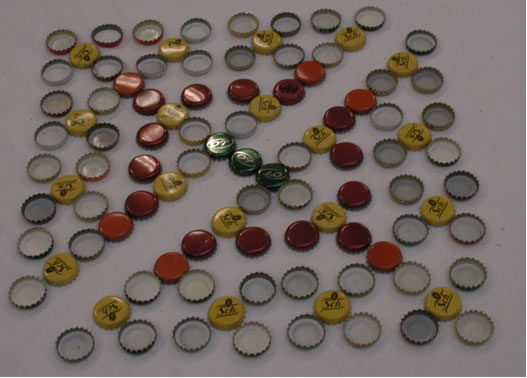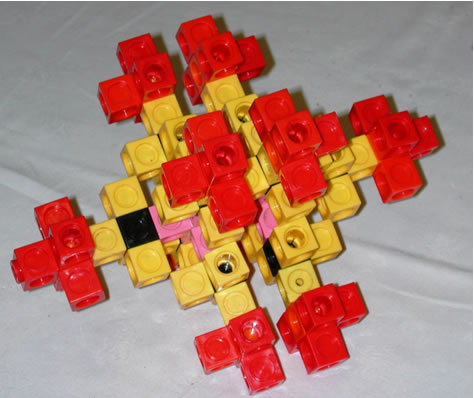Skip over navigation





Or search by topic
Number and algebra
Geometry and measure
Probability and statistics
Working mathematically
Advanced mathematics
For younger learners
Building Patterns
Age 7 to 11
Challenge Level 






Look carefully at the pattern above.
What do you notice?
Estimate the number of bottle tops that have been used. Now
count them.
Are the colours important? Does that help you count up more
quickly?
What do you think was in the mind of the girl that designed
this?
Why not take some counters and see if you can detect what it
is she was trying to do?
Just what was her "rule"?

Similarly what is happening here?
Estimate how many cubes have been used.
Look carefully ... there are four different colours used in
this construction ... How many of each are used?
Are you sure? Check carefully.
What rule was used to join them?
How will the design continue?
After two more stages how many cubes will you have used?
You may also like
Month Mania
Can you design a new shape for the twenty-eight squares and arrange the numbers in a logical way? What patterns do you notice?
Neighbours
In a square in which the houses are evenly spaced, numbers 3 and 10 are opposite each other. What is the smallest and what is the largest possible number of houses in the square?
Page Numbers
Exactly 195 digits have been used to number the pages in a book. How many pages does the book have?

